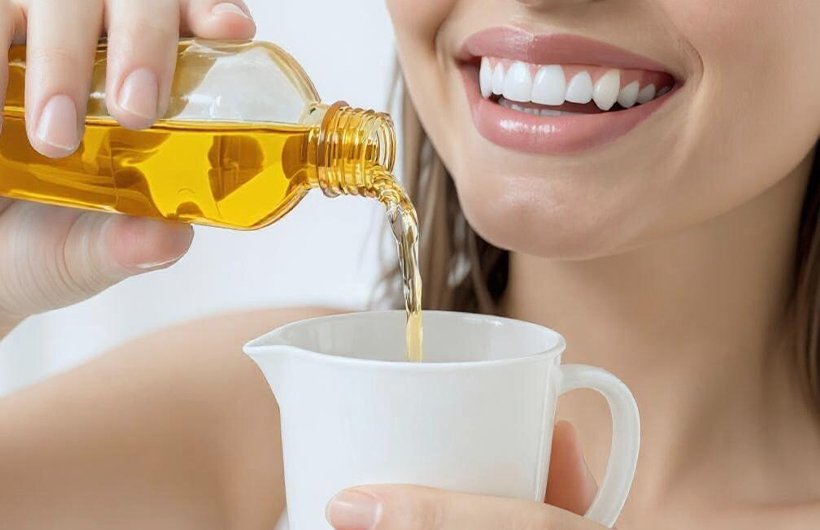What Is Oil Pulling? Benefits, How It Works, and Why You Should Try It
In the world of natural remedies and ancient wellness practices, oil pulling stands out as a simple yet powerful ritual that has withstood the test of time. Originating from Ayurveda, this traditional Indian technique has been gaining global attention for its impressive benefits in promoting oral hygiene and overall health.
But what exactly is oil pulling, how does it work, and why are so many people incorporating it into their daily routine? Let’s explore.
What Is Oil Pulling?
Oil pulling is a natural oral detox technique that involves swishing oil around in your mouth like using a mouthwash for about 10 to 20 minutes. The practice is typically done with coconut, sesame, or sunflower oil, all known for their antibacterial and anti-inflammatory properties.
The main goal? To “pull” out toxins, bacteria, and plaque from the mouth, supporting not just dental health but potentially improving other aspects of wellness too.
How Does Oil Pulling Work?
The process is based on the principle that oil can bind to harmful substances in the mouth. As you swish the oil between your teeth and across your gums, it mixes with saliva and traps bacteria, dead cells, and toxins. When you spit it out, you’re flushing away these impurities.
This simple act can:
- Disrupt the formation of plaque
- Reduce harmful bacteria like Streptococcus mutans
- Improve overall oral environment
While oil pulling doesn’t replace brushing and flossing, it acts as a supportive ritual that enhances your dental care routine.
Benefits of Oil Pulling
Here are some of the most reported benefits:
Fights Bad Breath (Halitosis)
Oil pulling can reduce odor-causing bacteria, leading to fresher breath.
Whitens Teeth Naturally
By removing surface stains and bacteria, it can gradually help brighten your smile.
Improves Gum Health
Its anti-inflammatory action may reduce gum swelling, bleeding, and teeth sensitivity.
Reduces Plaque and Bacteria
Regular use helps decrease plaque formation and cavity-causing bacteria.
Supports Detoxification
Some believe oil pulling helps rid the body of toxins through the mouth, improving skin and digestive health, although more scientific research is needed on systemic effects.
Moisturizes Dry Mouth
The swishing action can stimulate salivary glands, reducing dry mouth symptoms.
How to Do Oil Pulling: Step-by-Step
You’ll Need:
- tablespoon of coconut, sesame, or sunflower oil (organic and cold-pressed preferred)
Instructions:
Do it first thing in the morning, before eating or drinking.
Place 1 tablespoon of oil in your mouth.
Swish the oil gently for 10–20 minutes. Do not gargle or swallow.
Spit the oil into a trash can (not the sink to avoid clogging).
Rinse your mouth with warm water.
Brush your teeth as usual.
💡 Tip: Start with 5 minutes and gradually build up to 15–20 minutes.
Precautions to Keep in Mind
- Do not swallow the oil, as it contains bacteria and toxins.
- Oil pulling is a complement, not a substitute for brushing, flossing, or regular dental visits.
- If you have jaw issues (like TMJ), swish gently to avoid strain.
Best Oils for Oil Pulling
- Coconut Oil: Most popular choice due to its taste and strong antibacterial properties.
- Sesame Oil: The traditional Ayurvedic choice, rich in antioxidants.
- Sunflower Oil: A lighter option with anti-inflammatory benefits.
Final Thoughts
Oil pulling may appear simple, but when practiced regularly, it offers powerful benefits for your oral health and hygiene. This ancient Ayurvedic technique is a natural way to combat bad breath, strengthen gums, and brighten your smile—without harsh chemicals.
Dr. Stuti Bajaj, a trusted expert at a leading dental clinic in Ahmedabad, recommends making oil pulling a part of your daily morning routine. According to her, consistency is the secret to achieving noticeable results..
Ready to Try Oil Pulling?
Combine oil pulling with regular dental check-ups and brushing for a cleaner, healthier mouth.
Visit Face Multispeciality Dental & Cosmetology Hospital Ahmedabad for expert dental care.

